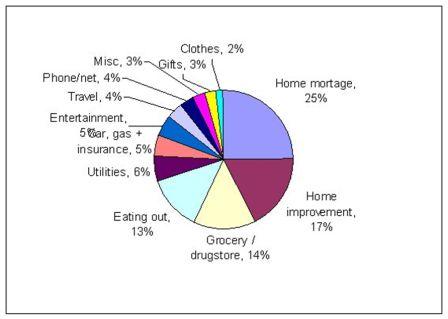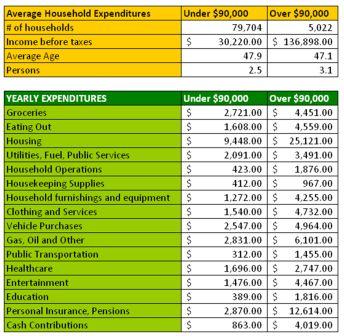About 63 percent of U.S. households spend 35 percent more on technology bills than utility bills, a study by iYogi Insight has found. That might come as a surprise since it does not fit much other data.
The study, which included respondent reports on their video entertainment, mobile, broadband, voice and application purchases, also found that mobile spending tops all other spending.
Mobile is a service used by people. Fixed-line broadband and cable TV are sold to “locations.”
You can sell more units to people than to households, if you consider that there might be 112 million households in the United States, possibly 95 percent of which are occupied, and that there are 309 million U.S. residents and citizens, of whom 80 percent are 15 and older, and constitute the primary market for mobile phone service. U.S. housing
That might suggest a potential 106.3 million residential locations that could buy broadband.
Assuming 84 percent of U.S. homes that use the Internet buy broadband, that might suggest about 60 percent broadband penetration of all homes. Keep in mind that some homes do not have PCs and that some PC owners say they do not use the Internet.
So assume there are 63.8 million U.S. homes that buy fixed line broadband. Compare that to the 247.2 million U.S. residents who are 15 or older (we are omitting those younger than 15 who do have mobile service).
There are, in other words, about four times as many potential mobile customers as residential broadband access, cable TV or landline voice accounts.
The “average” U.S. household has 2.6 people. That simply means half are bigger and half are smaller.
The highest expenditure is on mobile services, the study finds, with an average of $94 a month and an additional $19 on downloading games, music and movies.
Voice and data services are the most popular with 60 percent of respondents saying they subscribe to such packages.
Triple Play (News - Alert) package for Internet, TV and phone is the most popular with 50 percent of respondents saying they buy such products. iYogi says.
Households spend $20 to $180 per month on their Internet access bills. The point, some would say, is that U.S. households frequently spend more on communications than their electrical utility and water bills.
But there is a disconnect. The U.S. Department of Energy apparently estimates that consumers spend six percent to 12 percent of their income on utilities. But most other studies of household spending on communications suggest that U.S. households spend only about 2.3 percent of their income on communications. Household communications spending
That said, larger families and houses with more residents will likely find that communications spending exceeds utility bill spending. That might not be true for single-person households in areas where heating or cooling bills are high.
“Technology is now the real utility as increasingly households spend more on a combination of technology bills to stay connected than their utility bills,” says says Vishal Dhar, President Marketing and co-founder of iYogi. iYogi survey

But those findings do not square with prior studies of household spending where communications is such a small part of overall spending that it doesn't typically get its own category. Utility spending normally is significant enough to get its own reporting category. Contradictory evidence
Of course, communications might become a category specific enough to warrant tracking. It isn't clear where PCs, tablets, smart phones, software and other such expenses typically have been reported. And though there was a time when such purchases were not perhaps significant for most households, which might not be true any longer.

More contradictory evidence
Want to learn more about the latest in communications and technology? Then be sure to attend ITEXPO East 2012, taking place Jan. 31-Feb. 3 2012, in Miami, FL. ITEXPO (News - Alert) offers an educational program to help corporate decision makers select the right IP-based voice, video, fax and unified communications solutions to improve their operations. It's also where service providers learn how to profitably roll out the services their subscribers are clamoring for – and where resellers can learn about new growth opportunities. For more information on registering for ITEXPO registration click here.
Stay in touch with everything happening at ITEXPO. Follow us on Twitter.
Gary Kim (News - Alert) is a contributing editor for TMCnet. To read more of Gary’s articles, please visit his columnist page.
Edited by Rich Steeves
